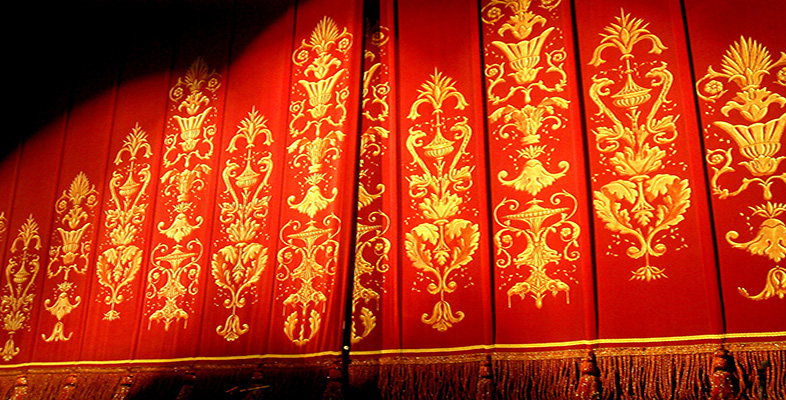7.3 Masks and disguises
Masks were used in classical Greek theatre to exaggerate expressions so that they could be seen in the large open-air amphitheatres. Most of us are familiar with the famous stereotypes for tragedy and comedy, but masks were also identified with particular types, whether comic or tragic, such as old man, or king, courtesan or queen. Masks have not been part of the dramatic conventions in Britain, but have been used to reflect social conventions of the Restoration period. The connotations of ‘play’ make it appropriate that plays should incorporate the social play of carnival and revelry, occasions when it was customary for participants to appear masked. Thus in The Rover masks are used by the characters, male and female, who participate in the carnival as a form of disguise, so that ‘whatever extravagances we commit in these faces, our own may not be obliged to answer ‘em’, as Belvile admits (Act II, scene 1).
Masking is a particular form of disguise, but disguising through clothes is a much commoner convention. The actors in a play are of course already disguising themselves simply by assuming their roles in the play, but a further level of disguise is frequently added, as it is in Henry V, As You Like It and The Rover. Disguise may encompass cross-dressing; Shakespeare, for instance, was particularly fond of requiring his heroines (played by boys of course) to take on a male role, as Rosalind does in As You Like It. But it can also be effected without any change of costume. The Macbeths, for instance, welcome Duncan to their castle with murder in mind: ‘look like th'innocent flower,/But be the serpent under't’, Lady Macbeth advises her husband (Act 1, scene 5, Arden edition). Similarly, in Othello, Iago pretends honesty, in order to work on ‘the Moor’, who ‘is of a free and open nature,/That thinks men honest that but seem to be so’ (Act 1, scene 3). In A Doll's House, Torvald draws attention to the mask of hypocrisy that Krogstad must assume, and Nora in effect disguises herself in the costume of a Neapolitan fisher-girl for a fancy-dress party. She adopts elements of that costume when at the end of Act II she dances the tarantella that reveals so much of her inner anguish. For that is the interesting thing about disguise; it both disguises and reveals or liberates, since clothes constrain not only by their form, but also by the behaviour that is associated with them. When Rosalind fashions herself as Ganymede she does so initially to escape danger at the court and to make her way out of the city without attracting notice. Similarly, the male disguise that Hellena adopts in The Rover allows her to behave with a freedom that would have been shocking in a woman. Disguise, then, can be used to escape danger, to titillate, or simply for fun, but it has the effect of exposing the dual nature of human beings, their repressed desires and impulses, as well as the self-consciousness of theatrical activity.
